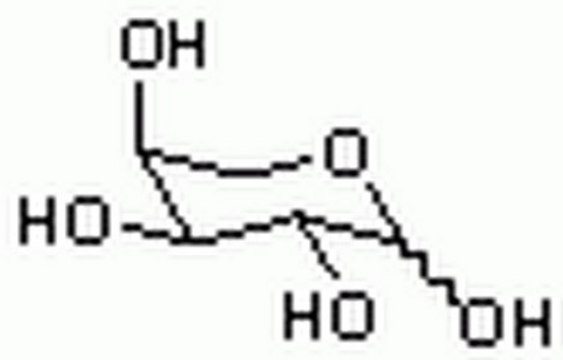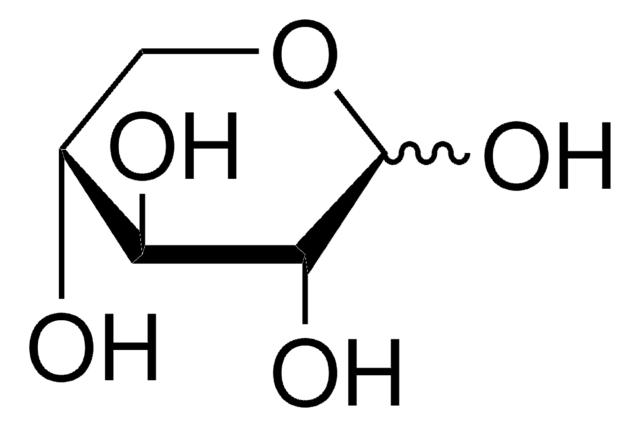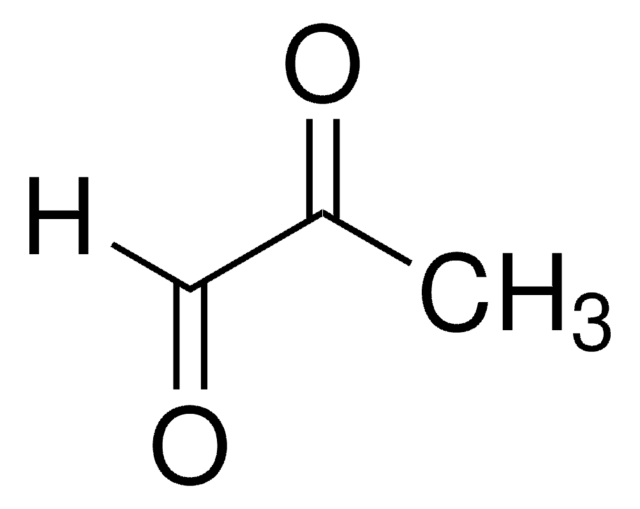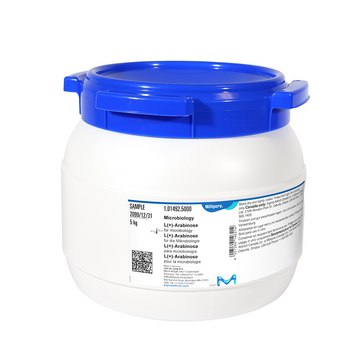W325501
L-(+)-Arabinose
99%
Synonym(s):
(+)-arabinose, (2R,3S,4S)-2,3,4,5-tetrahydroxypentanal, L(+)-Pectinose, L-arabino-pentose, Pectin sugar
About This Item
Recommended Products
biological source
synthetic
Quality Level
assay
99%
optical activity
[α]/D 102 to 105°, c = 10 in H2O (24 hours)
mp
160-163 °C (lit.)
application(s)
flavors and fragrances
food allergen
no known allergens
organoleptic
woody
SMILES string
OC[C@H](O)[C@H](O)[C@@H](O)C=O
InChI
1S/C5H10O5/c6-1-3(8)5(10)4(9)2-7/h1,3-5,7-10H,2H2/t3-,4-,5+/m0/s1
Looking for similar products? Visit Product Comparison Guide
Related Categories
1 of 4
This Item | A91906 | E003256 | 1.01492 |
|---|---|---|---|
| organoleptic woody | organoleptic - | organoleptic - | organoleptic - |
| biological source synthetic | biological source - | biological source - | biological source - |
| food allergen no known allergens | food allergen - | food allergen - | food allergen - |
| assay 99% | assay 98% | assay ≥99% (GC) | assay - |
| optical activity [α]/D 102 to 105°, c = 10 in H2O (24 hours) | optical activity [α]20/D +103°, c = 1 in H2O | optical activity [α]/D +103 to +105°(lit.) | optical activity - |
| mp 160-163 °C (lit.) | mp 160-163 °C (lit.) | mp 160-163 °C (lit.) | mp 158-160 °C |
General description
Biochem/physiol Actions
Disclaimer
Storage Class
11 - Combustible Solids
wgk_germany
WGK 3
flash_point_f
Not applicable
flash_point_c
Not applicable
ppe
Eyeshields, Gloves, type N95 (US)
Choose from one of the most recent versions:
Already Own This Product?
Find documentation for the products that you have recently purchased in the Document Library.
Customers Also Viewed
Our team of scientists has experience in all areas of research including Life Science, Material Science, Chemical Synthesis, Chromatography, Analytical and many others.
Contact Technical Service









